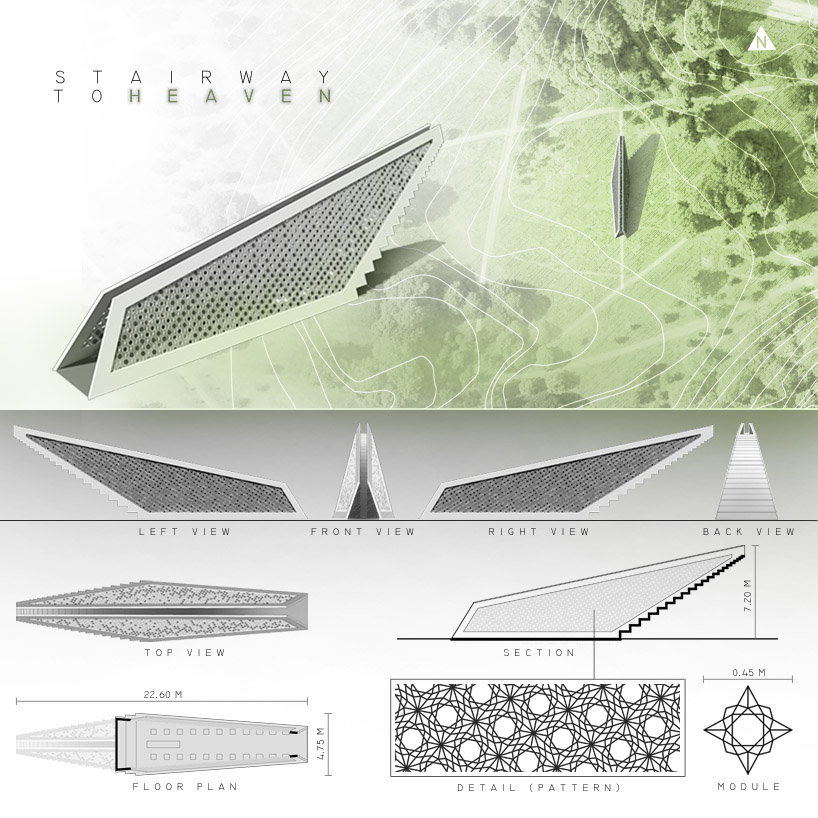
Stairway to heaven by EugenioR from portugal
designer's own words:
Death is a difficult subject to approach due to be associated with a whole group of negative feelings. It’s the absolute certainty of life from which there is no possible escape, and in that sense it’s terrifying but it’s also a source of fascination and wonder and has been the inspiration on many different philosophical and religions currents.
Throughout the ages mankind has been developing and revising its concept of death, different interpretations have been made all the way through history by different civilizations. We all possess a cultural heritage that defines our understanding of death. It is reflected into our collective identity and its one of the most important elements for the formation of a common cultural tradition.
We are in the midst of a technological revolution that changed the way we interact with the world and with ourselves. This is an ever changing world where we live longer but in a faster pace. Information is at the distance of a click, an invisible presence that’s available to everyone at anytime. All this gives birth to new trends, new tendencies in which funeral customs and traditions are not immune.
These customs and traditions established, in a very early stage, a symbiotic relationship between themselves and the built environment. So we can assume that Space has a very relevant role in the way how we collectively and individually deal with the loss of our loved ones. And when we speak about space we speak about architecture.
It’s through space and the tectonic aspects of the elements that architecture establishes a link with us, a bond that has several ramifications, far beyond any physical component. There is a spiritual role represented by architecture and it needs to evolve and be adapted to the new ways of living and understanding death.
This is where my proposal comes in place, the stairway to heaven, with the intent of turning a conceptual idea of deathcare into an architectural object that can provide a distinct and fresh spatial experience in which the natural elements (light, wind and rain for example) are used to help overcome the feelings of those who are dealing with the loss of a loved one.
In my point of view the process of bereavement cannot be considered complete without some kind of funeral rite. Those procedures ensure that there is an affective exchange between relatives and friends that comforts them into the acceptance and realization of what happened.
This is foreseen in the stairway to heaven and it’s supposed to happen at one exact moment of the day, an instant that results from the alignment of the sun, the earth and the physical architectural object. Its north to south cardinal orientation allows, at twelve o'clock in solar time, the sun light to focus in all its strength and establish an ephemeral connection between the altar and the stairway.
In that moment, as the wind is changed into a perfumed breeze by the ventilated facade, space and matter are one. This is the event that marks the beginning of a journey, a brief moment of farewell, which appeals to the human senses in the hope of imbuing that momentum with a positive remembrance.
In order to magnify this environment in which the ephemeral is almost palpable, specific square spaces were created for flowers, these are to grow in situ and can be different from the ones I chose, provided they are particularly attractive to butterflies.
The flowers you can see in the pictures are called Arctotis x hybrida , better known as African daisies . Its flowers are yellow and orange. The yellow color evokes feelings of joy, while the orange symbolizes energy, enthusiasm and warmth. These flowers are a symbol of friendship and represent new beginnings. Still they have a very peculiar characteristic that I like very much and that I believe makes them perfect for the concept that is being explored in this proposal, they close at night.
When the funeral service ends the cubes which serve as seats and the altar collect into the ground and leave the space available to those who wish to visit the stairway. At this time the stairway to heaven acquires a new meaning as it presents itself as an alternative to be the last address for the cremated remains of the departed ones and to serve as a place of remembrance. Auspicious to the healing process of the family members or friends of the deceased it’s also meant to be a place of meditation.
In the last few years the interest of the public for cremation has been growing in the United States and the greater acceptance of different religions seems to indicate that in the future this way of dealing with the remains of our loved ones will be a more common decision.
The cremated remains are to be stored in octagonal parallelepipedic urns, their design result directly from the module that composes the pattern of the walls. The walls and urns form a whole. They work as pieces of the same puzzle and allow you to consign a dynamic factor to the facade. The concept here is similar to the walls of a hive. It changes its configuration depending on the number and position of the urns.
These urns take advantage of technological elements that enable new forms of interaction. The urn serves as a repository for all kinds of information (photos, videos, etc) that can be accessed remotely with a phone or a tablet. The information available may result of a personal compilation from the deceased (advanced funeral planning), or can be chosen by the family or friends. More information can be added at any given time as long as the family allows it or if it was a wish of the departed.
The urn is solar powered and has a built in LED panel that can be turned on remotely, almost like lightning up a candle in memory of the one that passed away. This is something I would like to accentuate because it allows a metamorphosis of stairway, in the sense that during the day the light is sculpted from the outside in but during the night the reverse process happens.
Regarding the materiality of the stairway to heaven, it is intended that it can contribute to the ephemeral environment, almost magical that I want to see created. On the other hand it’s supposed to be an architectural object that is completely detachable and removable from the implant site with a minimal environmental impact. Consequently the structural elements are made of steel which are inside a frame that configures the outer boundaries of the walls made from marine plywood properly treated and painted in white. The same material is used on the other construction elements with the exception of the module that configures the pattern of the walls. These quadrangular modules are made in recycled acrylic glass. The use of these elements is done by a fitting system which creates the possibility of the panels being replaced or removed at any time.
The Stairway is not meant to be associated with a specific religion or cult but it intends to promote the idea that everything happens in its on time. It is an architectural statement that believes in a culture that qualifies the right to the ritual and facilitates the grieving process. The celebration of death should happen naturally, transparently and without taboos.
I conclude by dedicating this work to my grandmother who embarked on this journey not so long ago.
The stairway to heaven.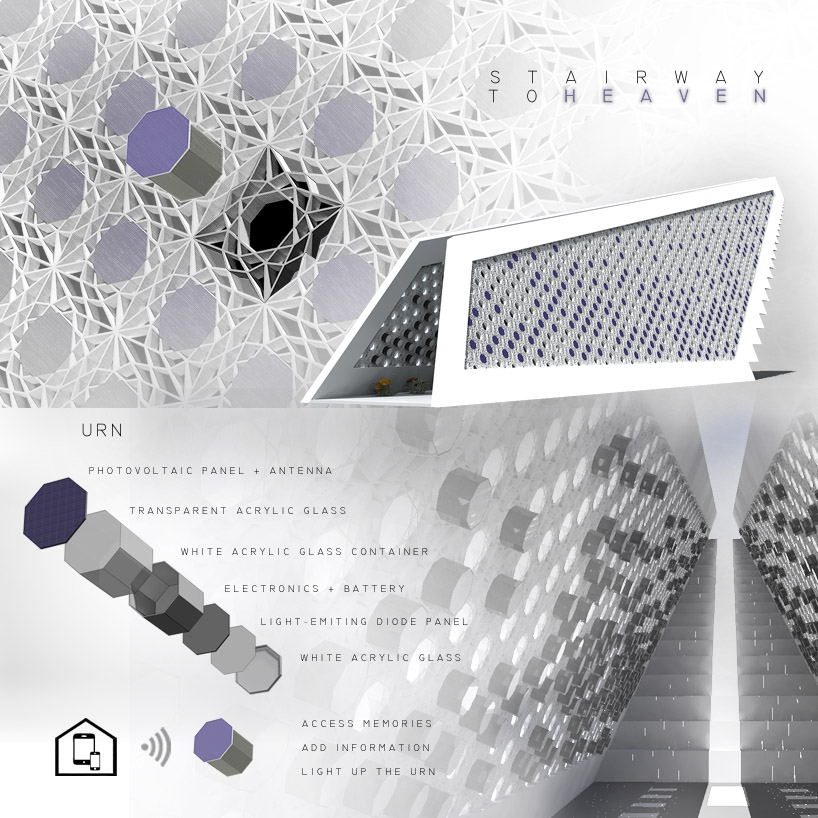
The urn and the module.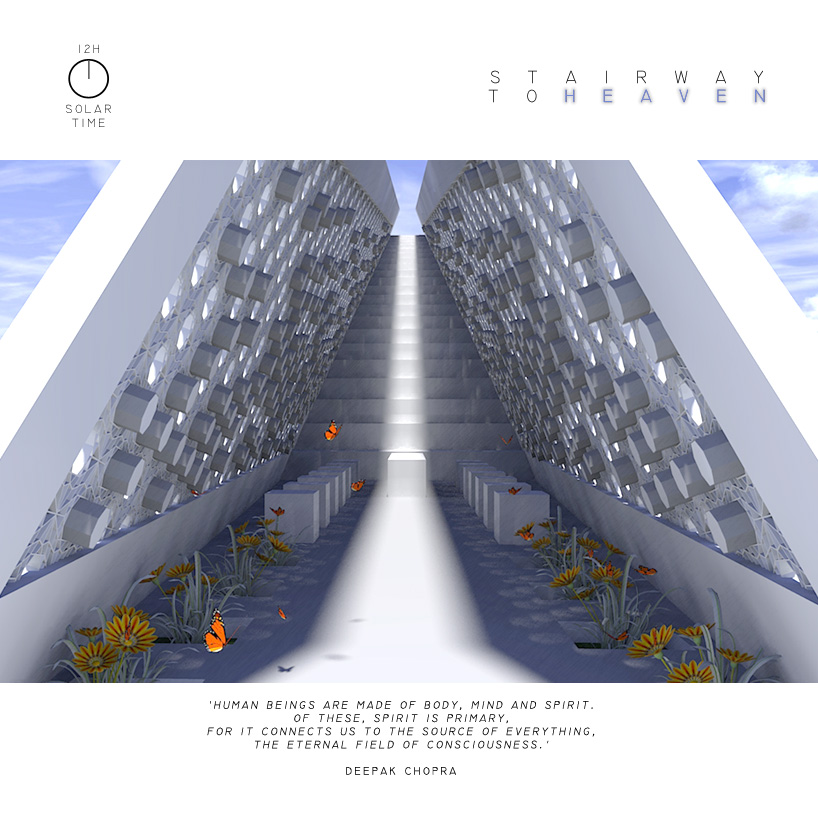
The ritual moment.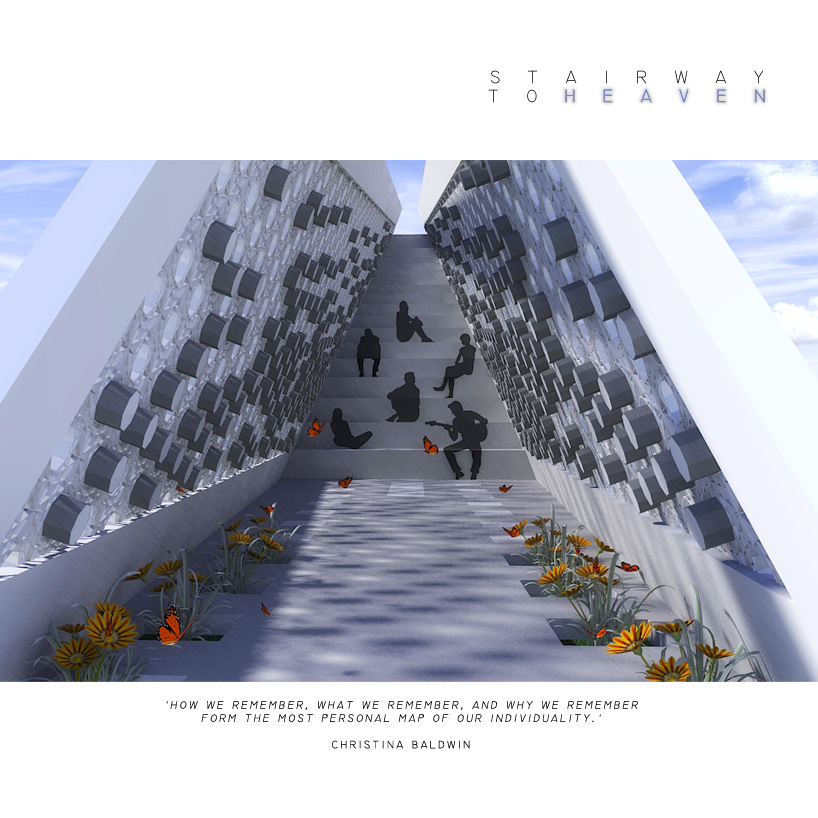
Remembrance.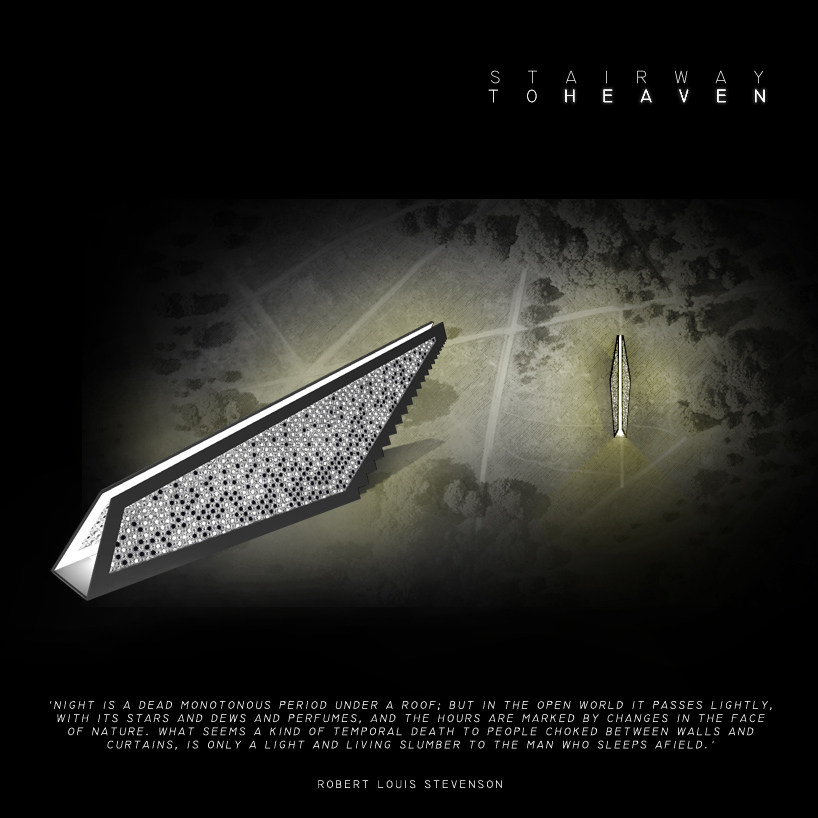
Exterior by night.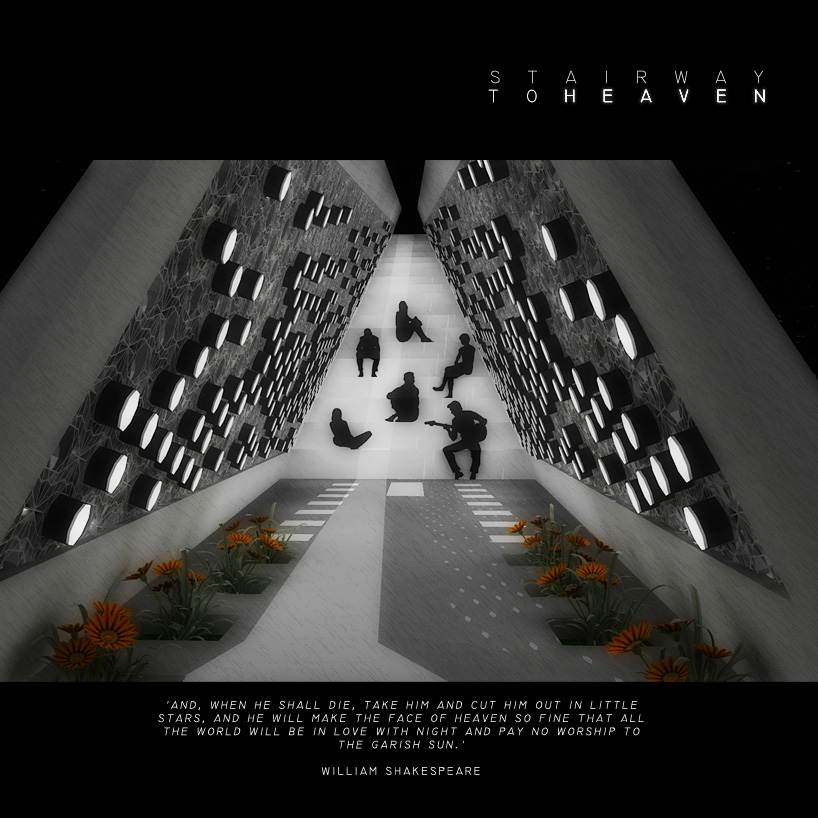
Interior by night.